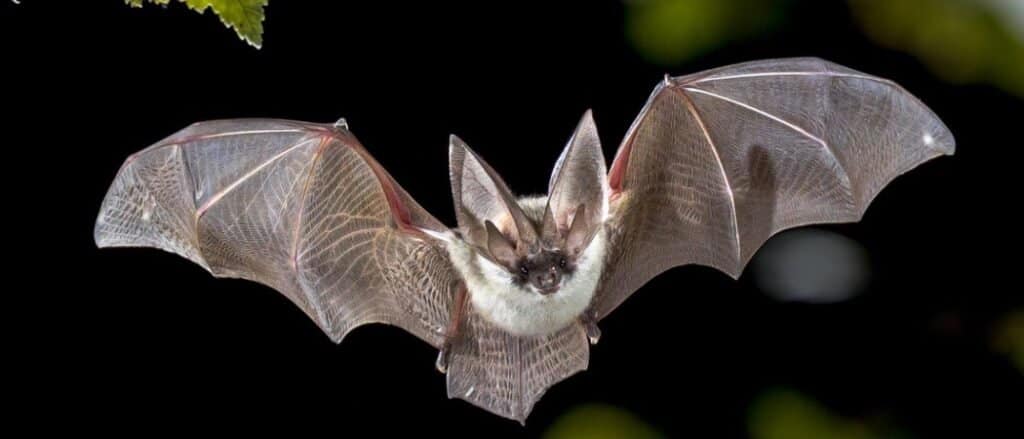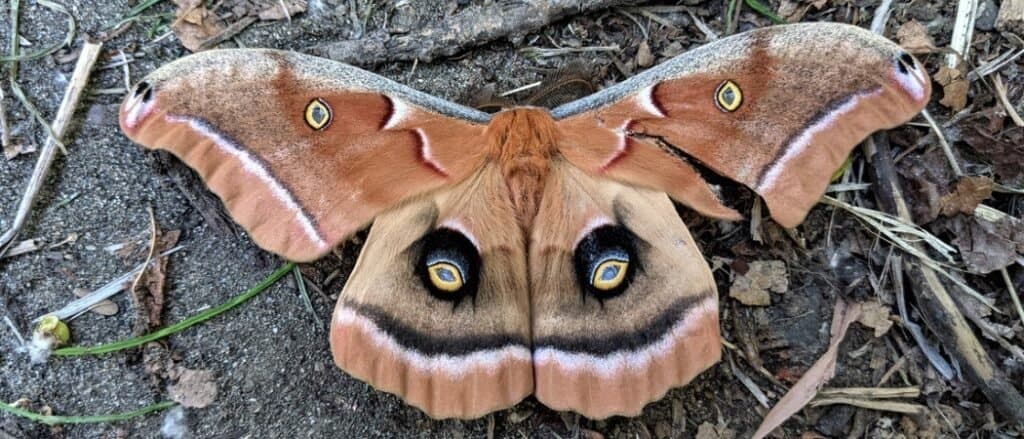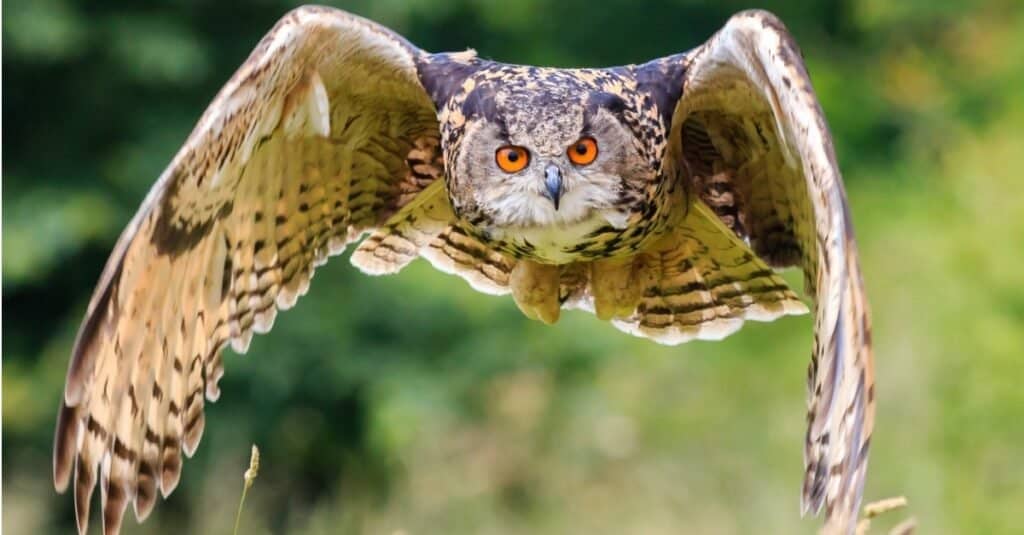
From the roar of a lion to the howl of a wolf, the sound of wild and wonderful animals is a thrilling experience. Sound is essential to the communication of many animals, and hearing plays a vital role too. As well as communication, hearing is used for hunting and even for navigation and many animals rely on it to survive. Here we’ll discover 10 animals that have the best hearing in the world.
Bat

Bata has the best hearing of all land mammals
©Rudmer Zwerver/Shutterstock.com
Bats are known for having the best hearing of all land mammals. Their front limbs have adapted into wings and they are known for their excellent flying ability. Bats use their hearing and a process called echolocation to detect prey and objects when flying. They emit extremely high-pitched squeaks when flying – known as ultrasound. When the sound hits an object (tree, building, prey) it is bounced back to them almost like an echo which allows the bat to detect exactly where that object is. This allows them to rely on their hearing rather than their sight to find prey such as beetles, moths, and mosquitoes. Although the exact range varies between species, bats can detect sounds between 1 and 200 kHz.
Moth

Moths have incredible hearing
©iStock.com/Mickilu
Surprisingly, moths have exceptional hearing and can even detect bats from 100 feet away before the bat even senses them. There are around 160,000 species of moths in the world, but none have better hearing than the Greater Wax moth. Greater wax moths can detect sound at frequencies of up to 300 kHz which is higher than any other animal in the world. Moths’ ears are connected to nerve cells, allowing them to detect even the slightest movement or sound. As soon as they hear a predator they change the direction they’re flying in and begin flying in an evasive pattern. Some even close their wings and drop to the floor until the danger has passed.
Owl

Owls rely on their hearing as well as their vision when hunting
©Richard Whitcombe/Shutterstock.com
There are around 225 species of owl in the world and they are best known for their incredible eyesight. However, these magnificent birds of prey also have excellent hearing which aids their nightly hunting activity. In most species of owl, the left ear is slightly lower than the right ear. This helps them to better determine which direction a sound is coming from when it reaches their ears. Owls have been proven to have particularly good hearing at frequencies greater than 5 kHz. Great grey owls regularly rely on hearing alone to hunt as they detect small rodents moving around underneath the snow and still strike with deadly accuracy.
Dolphin

Dolphins use echolocation to detect prey
©Irina No/Shutterstock.com
Like bats, dolphins use echolocation to detect prey and objects. However, these incredible aquatic mammals use echolocation underwater rather than in the air. Their hearing is seven times better than humans and they can hear sounds between 20 and 150 kHz. Dolphins mainly produce two types of sounds – clicking and high-pitched whistles and squeaks. Their clicks produce sound waves that bounce off objects and prey so that they can determine their exact size and location of them (echolocation). Although dolphins have small ear openings near their eyes they use their forehead and teeth to detect sound. Amazingly, their teeth actually act like an antenna and they can feel sound vibrations through their jaw which are then sent to their middle ear.
Dog

Dogs can detect sound we can’t
©Aneta Jungerova/Shutterstock.com
Dogs have long been known as man’s best friend and are loyal companions and working animals. They have much better hearing than us and can hear almost twice as many frequencies as we can. Dogs can also hear sounds from much further away than we can – four times in fact. Dogs can hear many more sounds than we can, which is why a lot of dog whistles even appear to be silent to us but the dog can still hear it, even if it’s a great distance away. Often people assume that dogs have a sixth sense for things, such as knowing when their owner is home. However, they’ve actually recognized the sound of the car and can pinpoint exactly where it is. Dogs’ ears are controlled by 18 muscles and they can tilt and rotate them to help them determine exactly where a noise is coming from.
Cat

Cats can hear sounds up to 64 kHz
©Namay Dolphin/Shutterstock.com
If you think that dogs have good hearing, then a cat is even better. Cats’ ears are controlled by 30 muscles and they can hear high-pitched sounds up to 64 kHz. They can even rotate their ears up to 180 degrees. Cats use their excellent hearing to help them to hunt prey such as mice and birds. This is so that they can tell where their prey is while waiting for exactly the right moment to pounce. Cats are especially clever as they possess the ability to filter out background noises. This is so that they don’t get overwhelmed and can focus only on those that matter.
Horse

Horses can hear sounds 2.5 miles away
©Anaite/Shutterstock.com
Horses have the ability to hear sounds from as far as 2.5 miles away. They can detect sounds up to 25 kHz and can rotate their ears 180 degrees. This allows them to determine the exact direction that the sound is coming from. Hearing is essential to horses as they are flight animals. They use their ears to assess whether the sound is a threat so they can decide if they need to flee from it. This is particularly essential to horses in the wild who might face threats from predators such as mountain lions, wolves, and bears. Horses also use a range of sounds to communicate and the ability to hear other horses and respond is vital to them.
Wolf

Wolves can detect prey miles away
©iStock.com/slowmotiongli
Hearing, along with the sense of smell is vital to wolves who rely on it when hunting. Wolves can hear sounds as far away as 10 miles in the open and 6 miles in forest regions and up to a maximum frequency of 80 kHz. Their ears are able to rotate independently which allows them to determine the exact direction that a sound is coming from. Wolves’ acute hearing helps them to detect even the smallest sound made by potential prey. However, it’s not just when hunting that wolves rely on their hearing. There is no sound more haunting than the sound of a wolf howling. Wolves communicate through a range of howls, whimpers, barks, and growls. They use these sounds to warn of danger or to warn another pack to stay away, and their ability to hear these sounds are essential to their survival.
Elephant

Elephants can detect sound with their feet
©AndreAnita/Shutterstock.com
Elephants have excellent hearing and their large ears are used to funnel sound waves which make their hearing especially good. They often communicate with a number of low-frequency rumblings and sounds that aren’t audible to the human ear. On average, they can hear the call of another elephant from as far away as 2.5 miles, and under good conditions from much further. Elephants are even thought to spread their sound waves through the ground as vibrations as well as through the air. They have a number of receptor cells in their toes which allow them to detect these vibrations through their feet. This incredible feature is thought to be why a lot of elephants change their behavior and act strange before an earthquake as they have detected the vibrations from the seismic activity.
Pigeon

Pigeons are one of the best navigators in the world
©Ruth Swan/Shutterstock.com
Pigeons have the best hearing in the animal kingdom thanks to a unique adaptation that allows them to hear in “infrasounds.”
Pigeons are one of the best navigators in the animal world. They have even been used to carry messages during wars, such as the level of trust placed in them. They have excellent hearing and can detect sounds at far lower ranges than we humans can – even detecting distant storms and volcanoes. These incredible birds were initially thought to use only the position of the sun and the earth’s magnetic field to find their way. However, researchers now believe that they also use “infrasounds” (low-frequency sounds) to find their way back home. They can also reach incredible speeds as well. reaching 77.6 mph for short bursts.
Which Animal Has The Worst Hearing?

Naked mole rats have one of the worst senses of hearing of any animal.
©Neil Bromhall/Shutterstock.com
Naked mole rats’ ears can’t amplify sound – rendering them almost deaf. Unlike most mammals, they have abnormal outer hair cells that cause this inability. These animals are also blind and make loud piercing noises – probably so other nearly deaf naked mole rats can hear them.
Summary 10 Animals With The Best Hearing
| Rank | Species | Frequency Range |
|---|---|---|
| 1 | Greater Wax Moth | Up to 300,000Hz |
| 2 | Dolphin | 2-200,000Hz |
| 3 | Bat | 9,000-200,000Hz |
| 4 | Rat | 250-80,000Hz |
| 5 | Cat | 55-79,000Hz |
| 6 | Dog | 67-45,000Hz |
| 7 | Elephant | 12-12,000Hz |
| 8 | Pigeon | 0.5-10,000Hz |
| 9 | Owl | 200-12,000Hz |
| 10 | Horse | 14-2,500Hz |
Bonus Animals With The Best Hearing!

Moths can hear sounds at 300 kHz, making them the insects with the best ears!
©Brett Hondow/Shutterstock.com
While dogs, cats, and other animals on our list indeed possess some of the most acute hearing capabilities in the animal kingdom, our research has unveiled other remarkable creatures with astonishing auditory abilities.
Here are the bonus animals with the best hearing:
- Moths
- Bush crickets
- Salamanders
- Octopus
Moths have some of the best sensory hearing in the insect kingdom. In fact, according to scientists reporting online in Biology Letters, the majority of moths can detect sounds as high as 300 kHz, making them the insects with the most sensitive ears.
Additionally, bush crickets are a type of Orthoptera in the Tettigoniidae family. They have two eardrums in each ear, found in their forelegs. Unlike other insects where sound pressure affects only the outer surface of the eardrum membranes, in bush crickets, it impacts both the outer and inner surfaces.
Interestingly enough, the inner ear of salamanders has multiple regions of acoustically sensitive sensory tissues, including the saccular macula, which is an otolithic organ specialized in detecting low-frequency sound and vibrations.
Lastly, the common octopus possesses the ability to perceive sounds ranging from 400 Hz to 1000 Hz, with its optimal hearing sensitivity centered around 600 Hz.
The photo featured at the top of this post is © iStock.com/slowmotiongli
Thank you for reading! Have some feedback for us? Contact the AZ Animals editorial team.






